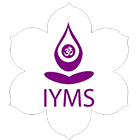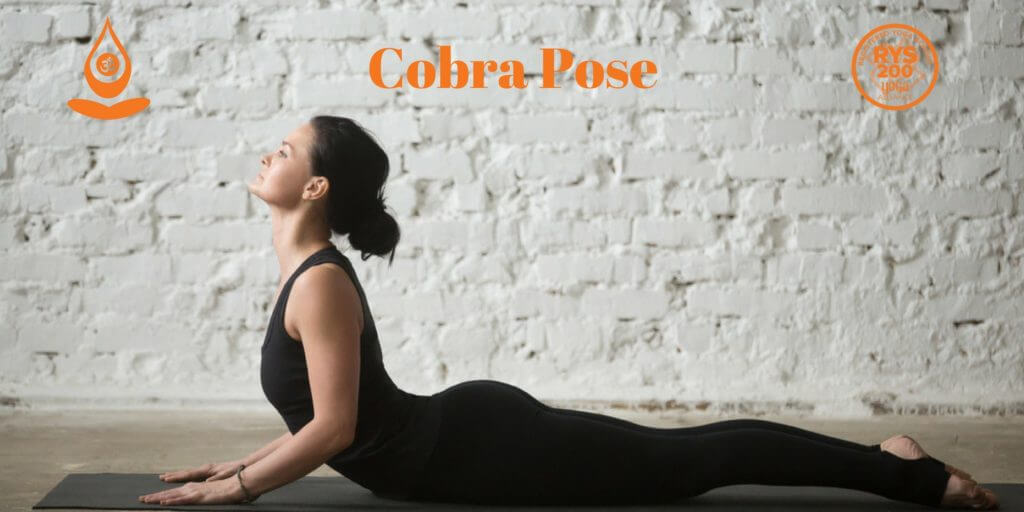Talking about cobra pose, think of the graceful snake raising its hood and body in a smooth arc. The cobra pose’s Sanskrit name is Bhujangasana. Here “Bhujanga” means snake or serpent and “asana” means pose.
This backbend is one of the poses that is incorporated into the Sun Salutations (Surya Namaskara), which is a wholesome exercise by itself.
Bhujangasana is a preparatory pose for all backbend yoga exercises. It can help prepare your body for deeper backbends such as the Camel Pose (Ustrasana) and the Upward Bow Pose (Urdhva Dhanurasana).
Meant for beginners, the cobra pose exercise can be done in a manner that suits your body’s current flexibility. So if you’re a newbie, then just raise yourself a few inches off the mat. Once your body gets accustomed to it, you can achieve the full backbend that the Bhujangasana prescribes.
Low cobra pose is recommended to individuals with less spinal flexibility while high cobra pose is for advanced level students with more spinal flexibility. People with stiff body can practice this pose while standing, with their hands placed against a wall.
Pose Information
- Yoga Pose English Name: Cobra Pose
- Sanskrit Name: Bhujangasana
- Pose Level: Beginner
- Pose Type: Backbend
- Strengthens: Vertebral Column and Lower Back
- Stretches: Thorax, Shoulders, Lungs, Abdomen
Preparatory Poses
- Bridge Pose or Setu Bandhasana
- Upward Facing Dog Pose or Urdhva Mukha Svanasana
Follow-up Poses
- Backbend Poses
How to Do a Cobra Pose
Bhujangasana begins as a belly down pose. In this pose you will feel impact on back, abdomen, thighs, and buttocks muscles.
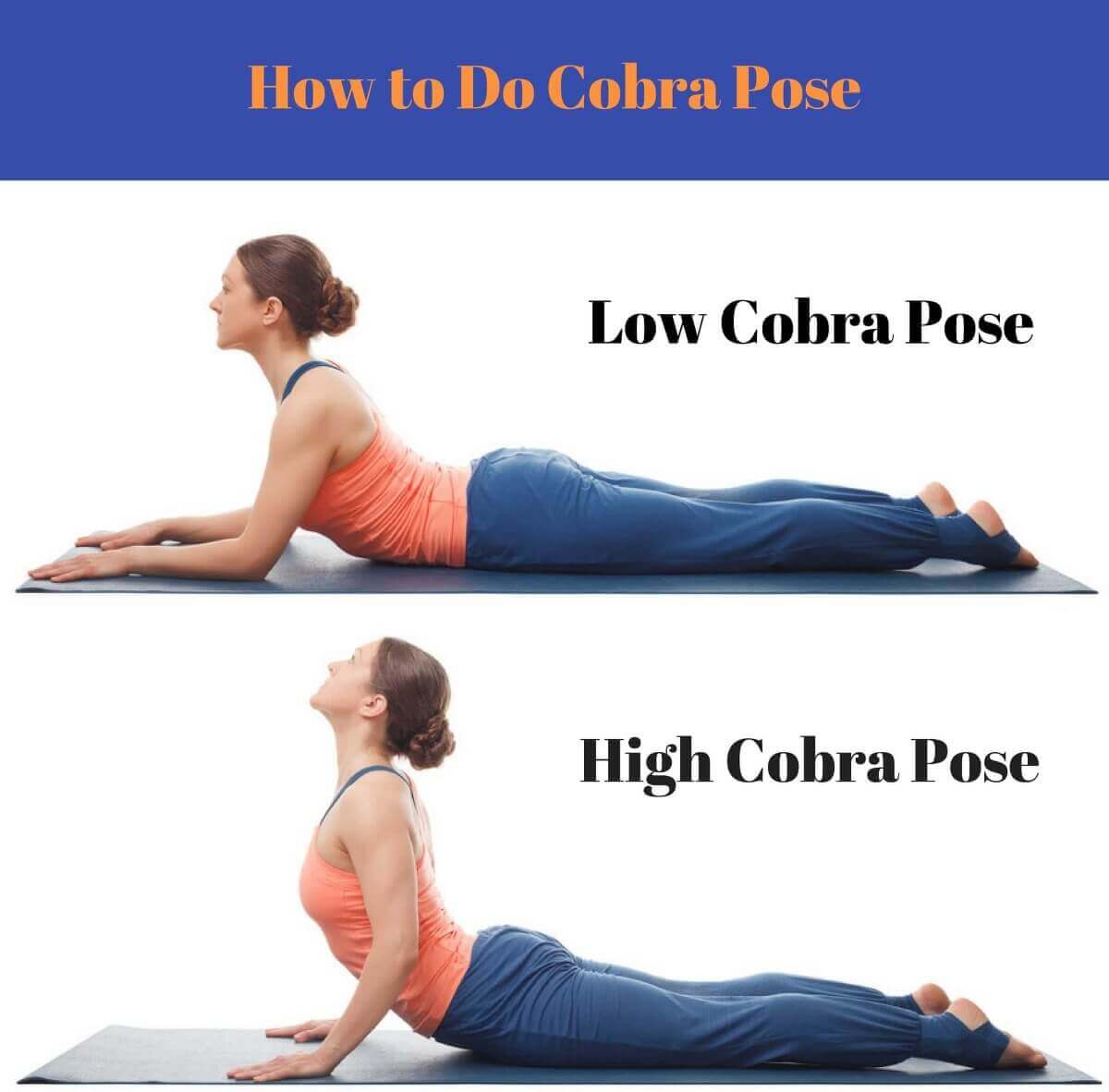
Depending on your flexibility, you can divide the pose into Low Cobra pose and High Cobra pose. If you are comfortable with the Low Bhujangasana, you can try the full version.
Don’t worry if you find even the Low Bhujangasana taxing. Listen to your body and bend only as much as you can without pain.
Follow these cobra pose steps:
Step 1
Lie flat on your stomach. Keep your feet together. Your toenails should touch the yoga mat and the soles of your feet face up.
Step 2
Place your hands under your shoulders with your fingers spread out. Your elbows must touch the sides of your chest.
Step 3
Push against the floor with toes, thighs, and pelvis.
Inhaling, raise your head and chest as much as possible so that your lower ribs still touch the mat. Your elbows must touch the sides of your chest. With this, you would have achieved the Low Cobra pose.
In the Low Cobra posture, your shoulders must be drawn backward, and downward away from your ears, so that your neck feels long. If you are trying this the first time, or if you find this pose taxing, keep your eyes on the floor. If the stretch on your back is comfortable, look up at the ceiling.
Step 4
If you are comfortable up to the Low Cobra point, you can try doing the High Cobra pose, which is the proper Bhujangasana. Spread your feet few inches apart. Now, inhale and lift your sternum, stretching the back as fully as you can. Feel the stretch in your upper and lower back.
Step 5
Hold the full Bhujangasana for 5-10 breaths. Exhale as you lower yourself back to the mat to lie in a prone position.
Cobra Pose Common Misalignments
Doing the backbend wrongly can cause pain in the very muscles it is supposed to help. Here are some cobra pose precautions for common mistakes you can make, and tips to avoid them.
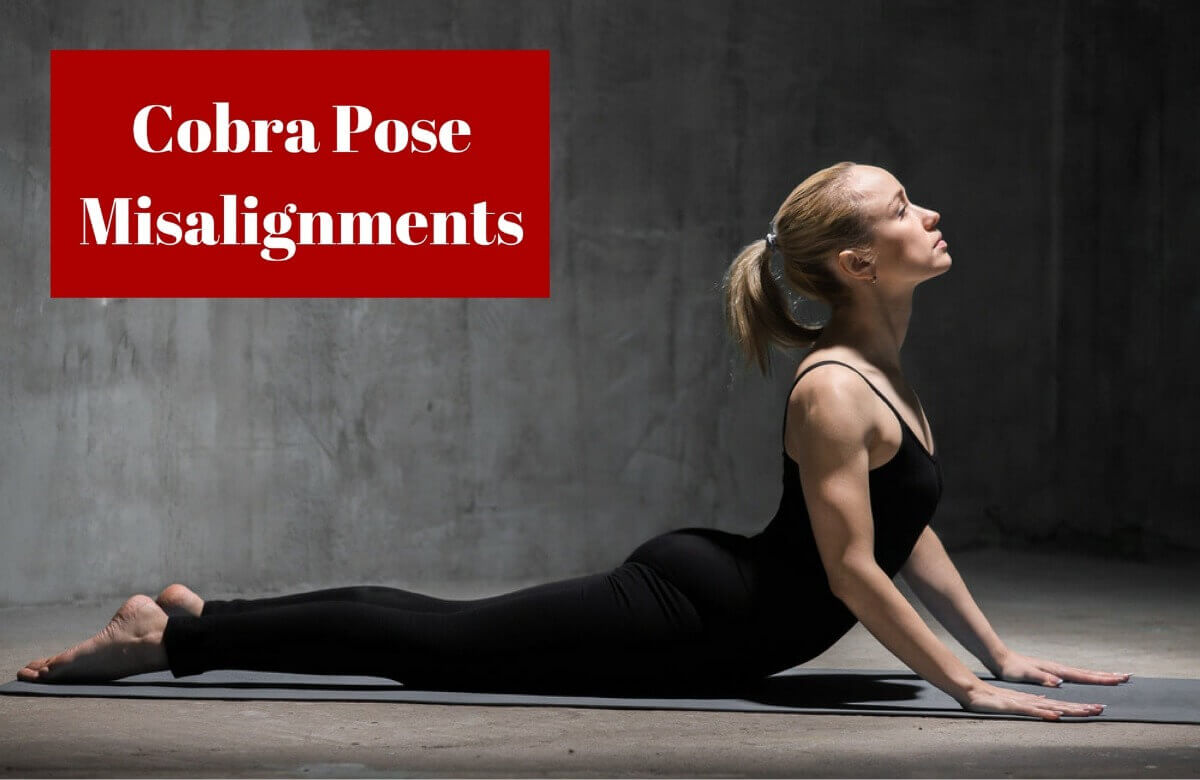
1. Hips
Initially, your hips will be tight. You will tend to automatically lift your hips off the floor to get the full height of the asana. Watch out for this. The focus of this asana is to build the muscles of your spine by maintaining the lift with the muscles of your back rather than with your hips or arms.
2. Hands
Your hands must be placed under your shoulders, and on either side of your chest.
3. Shoulders
The position of your shoulders is vital to doing the cobra pose correctly. Ideally, stretch your shoulders away from your ears, and then backwards. This will lengthen your spine, which is sort of the whole point of this yoga exercise. Getting this alignment wrong could leave you with lower back pain.
4. Elbows
Your arms must be slightly bent at the elbows. If your arms are completely straight you will push your shoulders towards your ears. This will not lengthen your spine as it should be, and you will end up accumulating tension in your shoulders.
5. Feet
For the Low Cobra pose, you can keep your feet together. But for the High Cobra pose, or the full and proper Bhujangasana, your feet must be separated by a hip-wide gap. Or else, you will end up adversely straining your lower back.
6. Head
Your head must align with your heart. Do not let your chin jut out, or else you will not be able to breathe freely. Keep your gaze straight ahead.
7. No L-shape
The idea is to evenly stretch your spine, but not strain your lower back. If your posture is close to an L-shape, you need lower yourself a bit so that you feel the stretch more evenly.
8. Buttocks
You will be tempted to clench your glutes. Don’t.
Cobra Pose Health Benefits
If you’ve followed the cobra pose instructions to a T, this asana has several benefits in store for you. Read on.
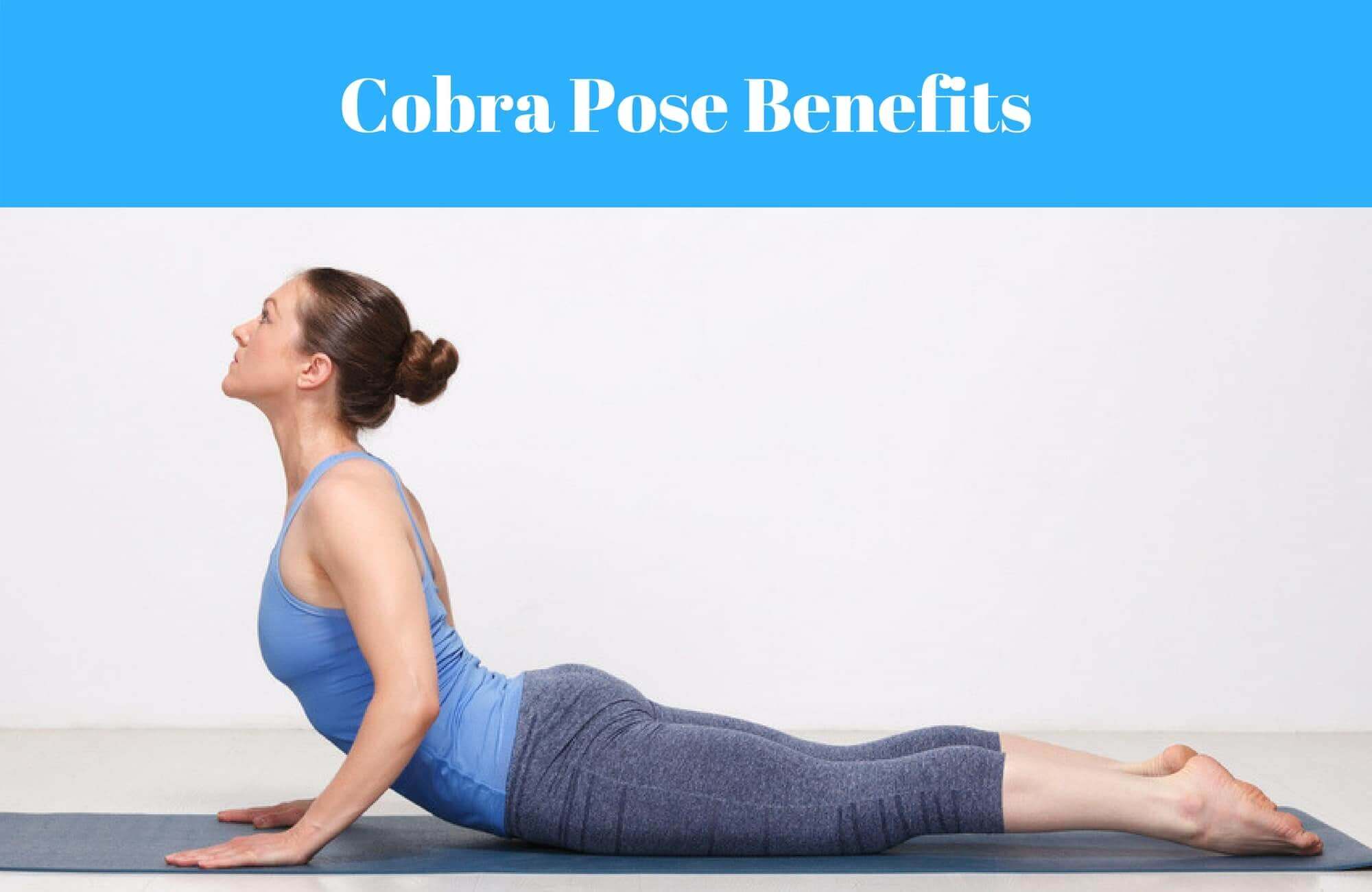
1. Suppleness and Strength
The spine is at the core of the cobra pose, and its benefits are concentrated here but are not confined to it. The cobra pose strengthens the muscles of your spine, thighs, arms and shoulders. It also increases the flexibility in all of these muscles.
Bhujangasana is often done after yoga postures that exercise your core body, to relax and stretch the muscles of your abdomen.
2. Chest
This pose helps open the chest, clears up pathways in your lungs and heart, and can also be beneficial for asthma and respiratory allergies.
3. Pain
Done right, this posture is a great way to relieve not just daily tension in your shoulders and neck, but also any kind of back pain you might be suffering from. By exercising the muscles in your back, neck and shoulders, the cobra pose keeps these areas well-oiled. It can also benefit people suffering from sciatica.
4. De-stressor
The cobra pose is good for de-stressing, given its impact on your chest. By opening up the chest and improving breathing, and by regularly flexing your back, this asana helps reduce stress and anxiety. This indirectly helps lift your spirit.
5. Body Systems
Cobra pose regulates metabolism and has a positive impact on your digestive, reproductive and urinary systems. It can also help mitigate menstrual discomfort.
6. Blood Circulation
The cobra posture also helps increase blood flow around the spine and pelvis.
Cobra Pose Modifications
If you have a stiff body, there are modifications that you can apply to make it easier for your body.
Cobra Pose Against the Wall
People with stiff spines or shoulders and pregnant women can attempt this pose against a wall. Stand facing a wall with your palms flat against the surface and your elbows touching the sides of your chest. Move your chest towards the wall, with your shoulders drawn away from your ears in a downward movement, and then backwards.
Cobra Pose Variations
If you can do full Bhujangasana correctly and easily, you might like to try following advanced cobra pose variations:
(a) Cobra Pose with Straight Arms
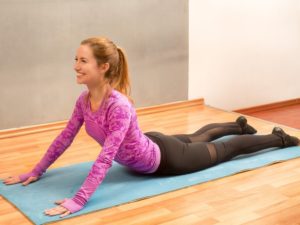 A way to deepen the Bhujangasana is to try cobra pose with straight arms.
A way to deepen the Bhujangasana is to try cobra pose with straight arms.
After coming in top position, walk your hands a little forwards so that the elbows are straight, then turning your arms a little outward.
Now, lift the sternum towards the ceiling.
(b) Frog Cobra Pose (Bheka Bhujangasana)
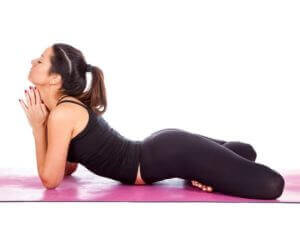 Once you have achieved the cobra posture, you can do the Bheka Bhujangasana.
Once you have achieved the cobra posture, you can do the Bheka Bhujangasana.
A variation where you cross your legs under your thighs like a frog and fold your hands in front in namaste position.
(c) Twisted Cobra Pose (Tiryaka Bhujangasana)
This is another variation which helps you focus on your back and spine. In this pose, you first shift your weight from the feet back palms to the toes. Balance yourself on toes and come into cobra pose with straight arms position. Now twist to left side trying to look at the heels of right foot. You need to twist towards both left and right side to complete this asana.
(d) King Cobra Pose (Raja Bhujangasana)
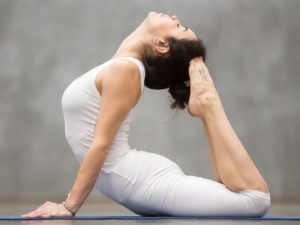 This pose resembles the cobra snake in attack position.
This pose resembles the cobra snake in attack position.
In this position, one needs to shift from their feet to their knees and lift the feet towards their head while pushing the head backwards towards the feet until the feet touch the crown of the head.
Try not to lift your thighs too much from the floor.
Please make sure that you do not jerk or force your body by a fast movement, this pose should be done with great precautions and at a very slow pace so that your spine does not gets any sharp movement during the pose.
Note: This is recommended only to advanced practitioners (Please do not attempt unless you have a highly flexible body).
(e) Snake Pose (Sarpasana)
Rest your body firmly on ground with your toes pointing outwards and chest completely on ground. Then take your both hands towards your back and interlock them. From this position, start lifting your chest without taking support of your hands. You need to use your strength and use your spine to lift your body.
Precautions
If you’re enthusiastic about doing yoga, you might be tempted to push your body more than it might be prepared to bend.
Don’t attempt the full backbend on your first try. Start small, start comfortable. Find a height that will not strain your body during your first try.
After a few attempts, deepen the pose until you do the full pose. Until then, make sure you avoid above cobra pose mistakes.
- Do not practice cobra pose in cases of carpal tunnel syndrome or a recent back or wrist injury.
- Pregnant women should not do cobra pose lying down. They should only practice cobra pose against the wall.
- If you have any medical concerns, consult your doctor before practicing yoga postures.
Conclusion
The cobra pose or bhujangasana is one of the most versatile asanas. Simple, but crucial to several workout routines, the pose has a lot to offer your body and spirit.
